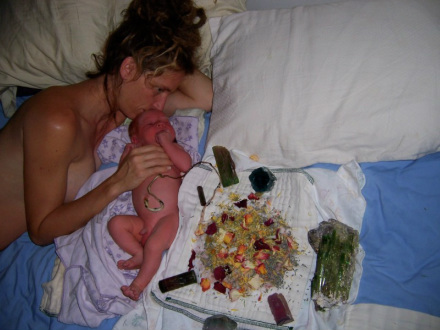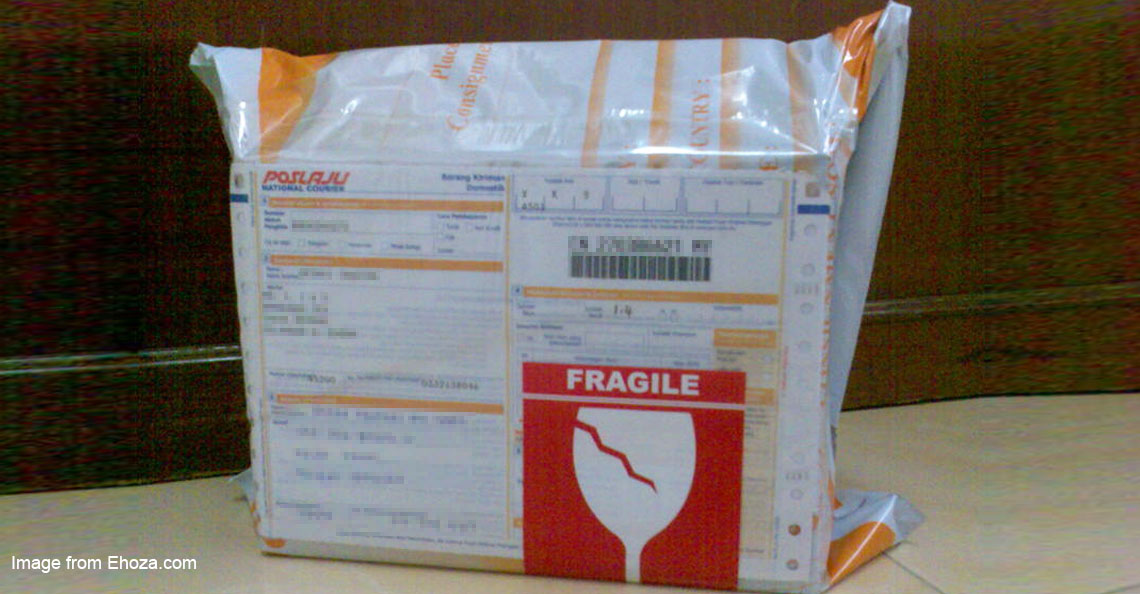6 alternatives to traditional births practiced by Malaysian women

- 655Shares
- Facebook647
- LinkedIn1
- Email6
- WhatsApp1
(This is a translated story from a freelance writer and mother of two. Untuk membaca artikel yang asal, klik di sini!)
(Editor’s note: This article is intended for informational purpose, do SEEK PROFESSIONAL ADVISE first if you wanna know more! Giving birth, and life, is a serious business!)
In the past, giving birth was always a mystery. If you weren’t an expecting mom, the midwife, or old experienced aunty, don’t expect to sembang with them – you ain’t in da club. Confirm you’ll get chased outta the room. Got all kinds of creepy stories too on the process of delivering, and even got special hantus for it – pontianak and penanggal!
THANK GOODNESS now we’ve got awareness and education now. We’ve got antenatal classes (to prepare mothers before childbirth) and husbands now can be by their wives’ side in the delivery room (if they pengsan it’s another story la). Now, conversations are also different. Those days, people ask, “Normal ah, C-section?” But now people answer also got something a lil’ extra, “Normal delivery, but water birthing. Canggih raite!”
Even if your circle of friends not that advanced yet, at least you would have read about celebrities who had water birthing, like the Angkasawan Negara’s wife Dr. Halina Yunos and hot actress Diana Daniell, then there’s Kate Middleton who was reported to have used the hypnobirthing technique, and all other kinds of delivery going viral on social media la. So let’s take a look at the baby birthing trends today:
1. Gentle birth

Gentle birth is supposed to make the mother, baby and family feel calm, comfortable and happy.
“Hah, give birth calmly? You serious or what? Aren’t delivery wards always havoc, women in labour always shrieking, doctors and nurses cheering like in a football stadium – “Ok, deep breath, now PUSSHHHHHH!!! Again, 1, 2, 3, PUSSHHHHHH!!” When the baby pops out “Yeh!!! GOALLLL!!”
Not necessarily.
We interviewed Ruzanna Abdul Rahman CBE (ChildBirth Educator) HypnoBirthing and AMANI Birth to learn more about gentle birth:
“Gentle birth aims to prepare parents with enough knowledge on making the best decisions for them; also towards the happiness and well-being of mom, baby and dad, whether through normal birth or surgery. It creates the environment of support and respect of mommy’s decision so that both she and her baby are well and safe, and so that it will be a positive, calm, non-traumatic labour.” – Ruzanna to CILISOS
Usually, mothers who pick gentle birth will come up with their own birth plans for the doctor and have as little, or no interference from the medical staff during labour. Among their requests, they don’t want:
- Checking the dilation (to check the cervix and see how much it has dilated)
- Lithotomy position (lying down with the legs propped up)
- Episiotomy (cutting the vaginal walls)
- Any form of painkillers (epidural, gas entanox, or pethidine)
- Induced labour (labour that is started artificially)
- Cutting the umbilical cord too soon
For each request, there’s a rationale behind it. For example, a mother will have an easier delivery if she’s positioned upright (squatting, sitting, crawling). This is because the coccyx (or tailbone) is free to move, enabling the opening to become wider and gravity to help the baby come out. Additionally, some believe that painkillers increase the risk of having to be operated C-section.
It’s said that the awareness of gentle birth sparked a whole lotta other delivering trends.
2. Water birth

The first question that comes to mind when we first heard of giving birth in water is, “The baby won’t drown meh?” Actually, when the baby is delivered in water, the baby’s breathing is still ‘in womb‘ mode, until the baby is lifted out, then only the lungs will begin to function.
The reasons why more and more moms pick water birth is coz:
- Mothers who are heavily pregnant feel really big, right? Wanna move also difficult with their big bellies in front of them. So floating in water will help moms move to a position that’s most comfortable for them.
- Mothers will feel more chillax in water. A calm disposition eases the delivery process along.
- It also decreases perineal trauma to the vagina and removes the need for an episiotomy.
Nina, 32, decided to give birth in water for her second baby after reading about other mothers’ experiences. When we asked her what the difference was to her first birth, she said:
“It felt a lot calmer, and the pain was more bearable. Not only because it was water birth, but also because I chose gentle birth dan natural birth. During my first delivery, my labour was induced (this medical procedure is carried out to speed up the labour). So it was very painful. The contractions kept coming until got no time to take a break.” – Nina to CILISOS
Nina went for delivery at Pantai Hospital, Bangsar, one of the hospitals in Malaysia that offer this method (another is Pantai Hospital in Cheras). According to her, she wouldn’t hesitate to choose water birthing if she had to do it all over again.
3. Hypnobirthing

Hypnobirthing? Erkk…you mean get hypnotised when you’re giving birth? Well, sort of la. This method, explored by Marie Mongan, is a philosophy that educates parents about delivering in a peaceful manner and techniques to control pain.
Some of the things you learn is self-hypnosis, calmness, special breathing technique, visualisation, affirmation, and education on giving birth. When the mom is calm, then the whole process also becomes a lot easier to get through and the pain is minimised. In some cases, got some mothers who don’t even experience pain at all, but instead they get orgasm!!
“Parents are encouraged to learn about hypnobirthing, even those with high risk who might have to undergo C-section… The techniques they learn in a hypnobirthing programme can be applied during recovery, since many experience bigger problems during recovery compared to the delivery itself. Like going through the challeging pantang time or depression after delivering, for example. Hypnobirthing will help C-section mothers recover too.” – Ruzanna
If you are interested to read more hypnobirthing stories of Malaysian parents, click here. Or if you would like more information about hypnobirthing classes, visit this Facebook page.
4. Lotus birth

Normally doctors will cut off the umbilical cord right after the baby is born right? Then when the placenta (uri) comes out, it will be buried or thrown away. Lotus birth practices NOT cutting the umbilical cord, instead it is left connected to the placenta that has left the womb. The placenta is put into a container with salt and herbs so that it’ll quickly dry and won’t stink. When the umbilical cord dries and drops off on it’s own (mostly around 2-10 days), then only it is buried.
People who practice lotus birth believe the baby will feel more calm if the umbilical cord is not cut. They also believe that if it is cut too early, not enough blood is pumped into the baby coz it’s still contained inside the placenta.
In Malaysia, most of the mothers who choose lotus birth deliver at home. But recently, there are doctors here that allow lotus births to be done at the hospital.
5. Roma birth wheel

Looks super canggih right this birth wheel? Actually it’s the same concept as the old-fashioned birthing chair, but with an upgrade. Birthing chairs have existed since the time of Ancient Egypt. It makes it easier for women to deliver in sitting, squatting, standing or other types of positions.
Hard to picture it in your mind? Nah watch this video to see how it’s done.
As explained, positions other than lying down speed up the labour process. This is because the dilation speeds up by about 30% more if the mother is in an upright position.
Maxveen Sandhu shares her experience of giving birth with the Roma wheel.
“I was advised by my doctor in Australia (where I was staying when I was 7 months pregnant) to move when I was in labour (active birth). Only a small number of doctors and hospitals in Malaysia encourage that. After some research, I met a doctor in Hospital KPJ Ampang Putri who supported active birth and so happens the doctor has also brought a Roma wheel to Malaysia. I chose this method because it helped me easily change positions. I could sit, squat, stand and even though when I was lying down or half lying down, it didn’t put pressure on my back or narrow the birth canal. I could also swing from left to right or in a circle, lay back when I needed a break, and raise it up when I wanted to push.”
So for your info, only Hospital KPJ Ampang Putri has this option in Malaysia.
6. Home birth

Home birth is divided into 2 types. First one is with the help of medical professionals (assisted home birth). Like in those days when people call the midwife to come to the house la. Nowadays there are fewer of these cases coz it’s easy to get to the hospital, plus the Health Ministry doesn’t have enough staff to layan home births.
The second one is without any doctor’s help at all (unassisted home birth), which has sparked a lot of controversy. More mothers are sharing their experience sharing their experiences and it’s becoming viral on the internet.
Iza, 32, chose to deliver her baby at home after her first experience at the hospital was awful.
“When I gave birth to my first child, I asked for an epidural so I wouldn’t feel the pain. But dunno what mistake they made, I felt such immense pain. And the whole process took so long. They gave me some kind of painkiller that made me x. I also wasn’t allowed to move so I just lay there tahaning the pain because the heart rate monitor was attached to me.”
Other reasons some mothers choose to give birth at home is because they malu to expose themselves to the doctors and staff, or wanna give birth normally after having gone through a C-section before that (VBAC), or they wanna feel calm without doctors interfering here and there, while others pulak couldn’t reach the hospital on time.
The controversy happens when all those who deliver at home don’t have a happy ending. Fatalities have been known to happen which the Health Ministry views as a very serious issue.
With alternative deliveries, more people are beginning understand gentle birth

Nowadays got more private hospitals offering alternative delivery options. Awareness about gentle birthing has made many mothers feel that giving birth is not such a scary thing after all, but something beautiful and natural.
But remember, not all these births are without risk. If you intend to try any alternative methods, please make sure you do proper research and get it supervised by a certified medical practitioner.
- 655Shares
- Facebook647
- LinkedIn1
- Email6
- WhatsApp1



